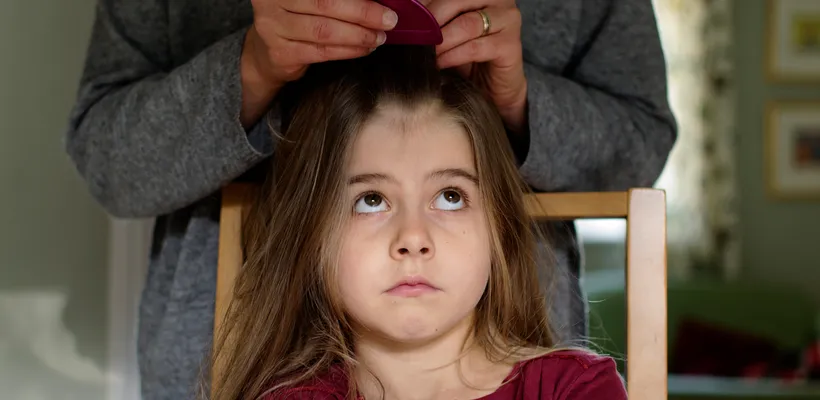
Published: 2nd September, 2016 in: Health Advice News
Here in the UK we spent £27 million on over-the-counter treatments for head lice last year. Head lice are extremely common and are one of the main topics of customer conversation in pharmacies across the region.
Mark Sykes, a pharmacist with Weldricks told us more about these skin-crawling, blood-sucking bugs and how to get ahead of them with effective treatments.
“Head lice are small, wingless insects that can only live on human scalps. The adults are around the same size as a sesame seed and they’re greyish, brown in colour.”
“Contrary to popular belief, head lice can’t fly, hop, skip or jump and they don’t burrow into the scalp. They live on the hair strand itself and are equally happy on short or long hair – they can survive on hair that is just 2mm in length – and they really don’t mind if that hair is clean or dirty. All they’re after is to feed on their host’s blood!”
“Adults and children alike can be affected by head lice although girls aged between 4 and 11 are most likely to be affected. We think this is down to the fact that head lice can only be transferred via direct head-to-head contact and due to the fact that girls play closely together when they’re young, they’re more susceptible to them. It takes an adult head louse just 30 seconds to walk across to another head! It is possible to pick up head lice from pillows or combs but they can’t survive longer than 24 hours away from a human head so this way of catching them is less likely.”
“Children don’t always pick up head lice from school. As symptoms can often go unnoticed, they may be transferred from a relative such as a sibling, parent or grandparent. If a person does have symptoms they are likely to be an itchy scalp caused by an allergic reaction to the saliva the head louse produces when it bites. But an itchy scalp doesn’t always mean head lice, it could equally be dermatitis, eczema or dandruff.”
“Each head louse can live for up to 40 days and lay around 100 eggs which take seven days to hatch. Those eggs are actually referred to as ‘nits’ and they’re about the size of a pinhead so are difficult to spot. It’s worth noting that if you spot ‘nits’ if doesn’t necessarily mean there is an infestation. I must stress that you need to see an actual live head louse to confirm there is a problem that requires medical treatment.”
“The good news is that treating head lice is relatively simple but it is vital to follow the instructions correctly to ensure success.”
“So, to sum up: head lice are very common in both children and adults so it’s worth checking every member of the family if you find head lice on your child. Only treat if you see actual living, moving head lice and pay close attention to the instructions of a particular treatment to ensure its efficacy. “
“Finally, if you have any questions or queries, just pop into your local pharmacy. We see people almost on a daily basis with head lice and treatments are a basic line for us. If you want advice, there’s no need to be embarrassed but we do have consultation rooms too if you’d rather talk to a pharmacist in private. We’re here to help you get ahead of the headlice!”
To view our full range of head lice products, please click here.
Facts:
Itching:
Life Cycle of a Louse:
Detection:
Treatment: